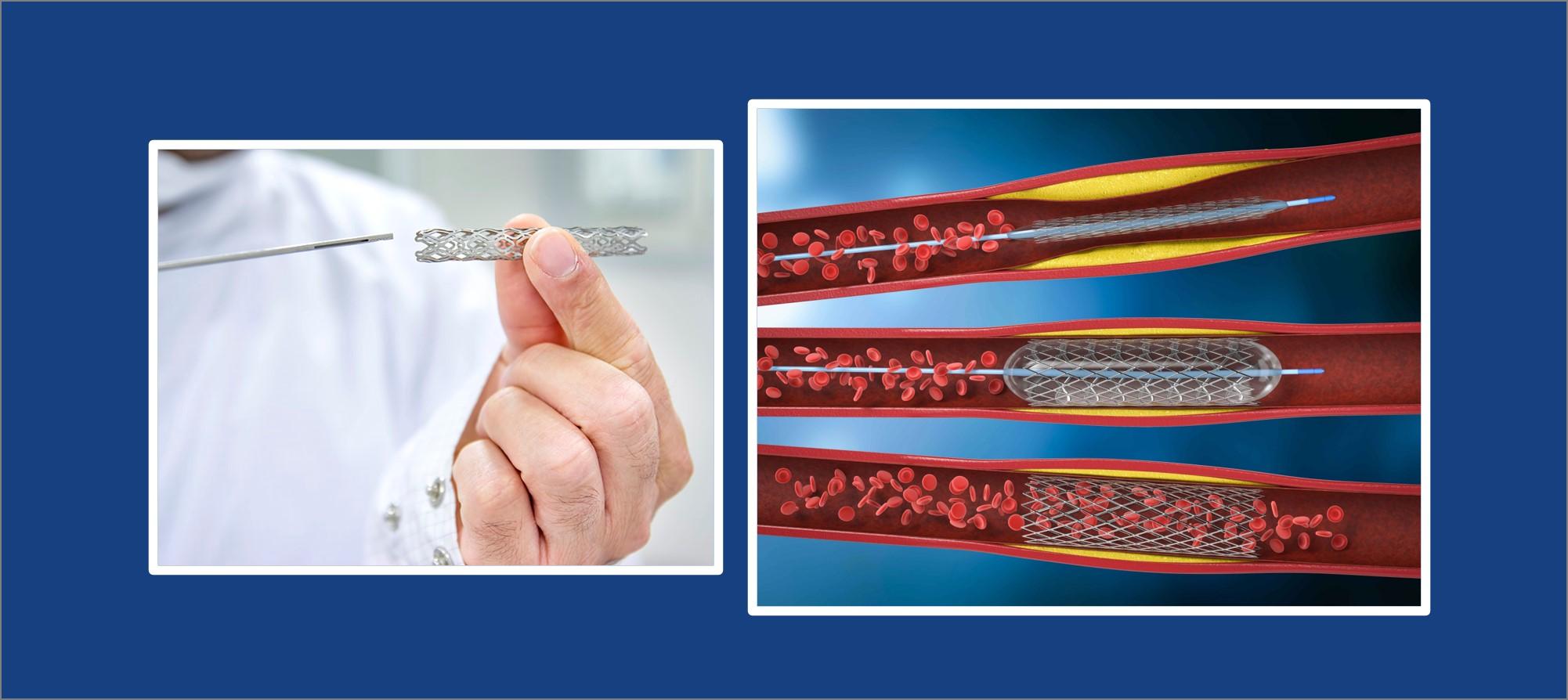What is Angioplasty & Stent Placement?
Angioplasty is a procedure to open narrowed or blocked blood vessels (coronary arteries) that supply blood to the heart.
Angioplasty can be done in an emergency setting such as a heart attack. Or it can be done as elective surgery if your healthcare provider strongly suspects you have heart disease.
Stent – A stent is a tiny, expandable metal mesh coil. It is put into the newly opened area of the artery to help keep the artery from narrowing or closing again.
Understanding the procedure
Your doctor will insert a flexible tube (catheter) into an artery. Sometimes the catheter will be placed in your arm or wrist, or in your upper leg (groin) area. You will be awake during the procedure. The doctor will use live x-ray pictures to carefully guide the catheter up into your heart and arteries. Liquid contrast dye will be injected sometimes to highlight the blood flow through arteries.
A guide wire is moved into and across the blockage. A balloon catheter is pushed over the guide wire and into the blockage. The balloon on the end is blown up (inflated). This opens the blocked vessel and restores proper blood flow to the heart.
A wire mesh tube (stent) may then be placed in this blocked area. The stent is inserted along with the balloon catheter. It expands when the balloon is inflated. The stent is left there to help keep the artery open.
Why might I need angioplasty or stent placement?
Basically, angioplasty is done to restore coronary artery blood flow when the narrowed artery is in a place that can be reached in this manner. Arteries can become narrowed or blocked by deposits called plaque.
Please note that not every blockage can be treated with angioplasty. Some who have several blockages or blockages in certain locations may need coronary bypass surgery.
Outlook of angioplasty procedure
For most people, angioplasty greatly improves blood flow through the coronary artery and the heart. It may help you avoid the need for coronary artery bypass surgery (CABG).
Angioplasty does not cure the cause of the blockage in your arteries. Your arteries may become narrow again. Follow your heart-healthy diet, exercise, stop smoking (if you smoke), and reduce stress to lower your chances of having another blocked artery.


